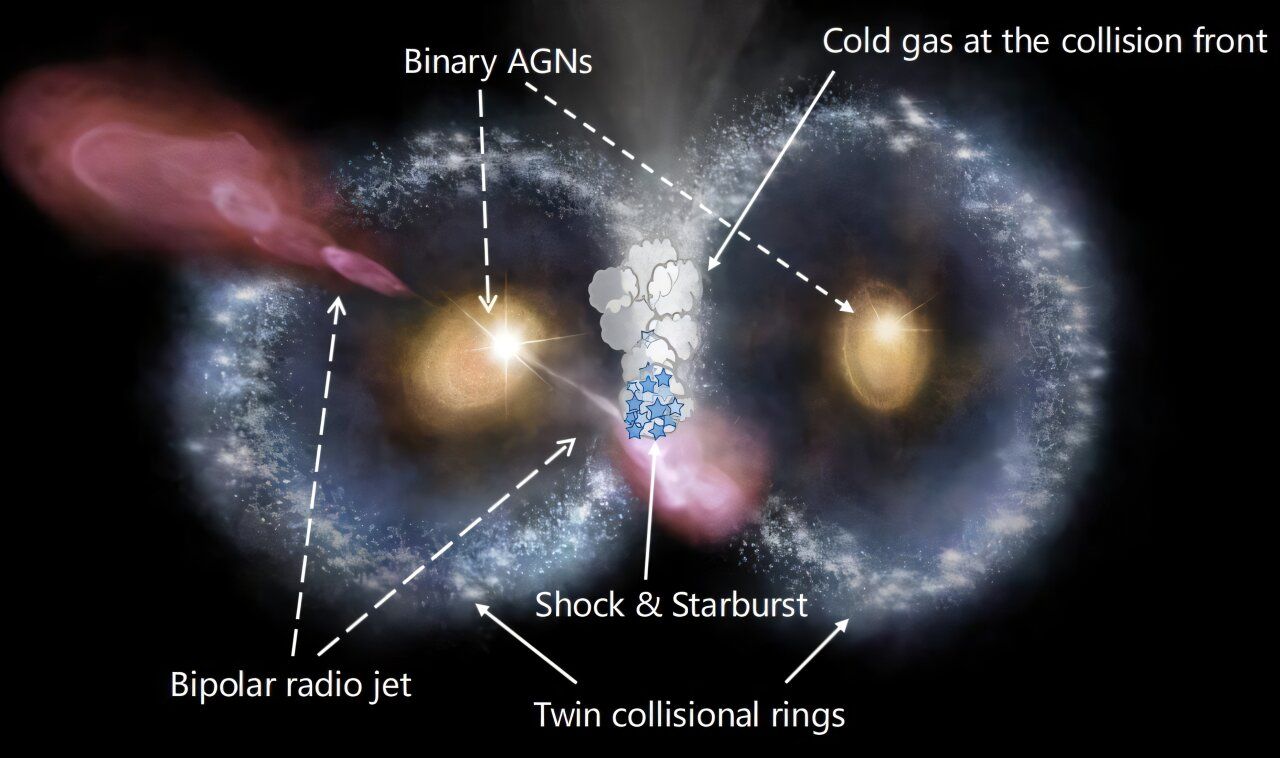Follow us on Google News (click on ☆)
This discovery, nicknamed the "Cosmic Owl," results from in-depth analysis of images captured by cutting-edge telescopes. The galaxies in question, of the collisional ring type, have created nearly perfect circles around their nuclei. This rare phenomenon provides a unique glimpse into the dynamics at work during such collisions.

Annotated representation of the Cosmic Owl, showing two collisional ring galaxies with double active nuclei.
Credit: [i]arXiv[/i]
Researchers used instruments like the James Webb Space Telescope to study this merger. The data reveal that each galaxy has an active nucleus, a sign of the presence of a supermassive black hole. The symmetry of the rings suggests a head-on collision between two galaxies of similar mass.
The Cosmic Owl is located approximately 8-9 billion light-years away, with a redshift of 1.14. The rings, about 26,000 light-years in diameter, are the result of intense gravitational forces. This configuration allows the study of how galaxies accumulate stellar mass and how supermassive black holes grow.
The study highlights the interaction between the two galaxies, particularly via a bipolar radio jet. This jet, emanating from one of the nuclei, influences the star-forming region between the two galaxies.
Detailed images show intense star-forming zones, colored in blue, resembling a beak between the two "eyes" of the owl. This discovery, published on arXiv, opens new perspectives on the mechanisms of galactic mergers and their role in the young Universe.
How are collisional ring galaxies formed?
Collisional ring galaxies result from nearly head-on collisions between two galaxies. When one galaxy passes through the disk of another, gravitational forces disrupt the distribution of gas and stars.
This phenomenon creates a shock wave that propels matter outward, forming a ring. These structures are relatively rare, as they require very specific collision conditions.
Collisional rings offer a unique window into the dynamic processes of galaxies. They allow astronomers to study how galactic interactions influence star formation and galaxy evolution.
The Cosmic Owl, with its two nearly identical rings, is a remarkable example of this phenomenon. Its study helps us understand how galaxies evolve and interact in the Universe.
What is an active galactic nucleus?
An active galactic nucleus (AGN) is a compact region at the center of a galaxy, extremely luminous. This brightness is due to the accretion of matter by a supermassive black hole.
AGNs are among the most energetic objects in the Universe. They can emit radiation across the entire electromagnetic spectrum, from radio waves to gamma rays.
The presence of an AGN significantly influences its galactic environment. The jets and winds produced can regulate star formation and redistribute matter within the galaxy.
In the case of the Cosmic Owl, both galaxies possess an AGN, which is rare. This configuration allows the study of how AGNs interact during a galactic merger.